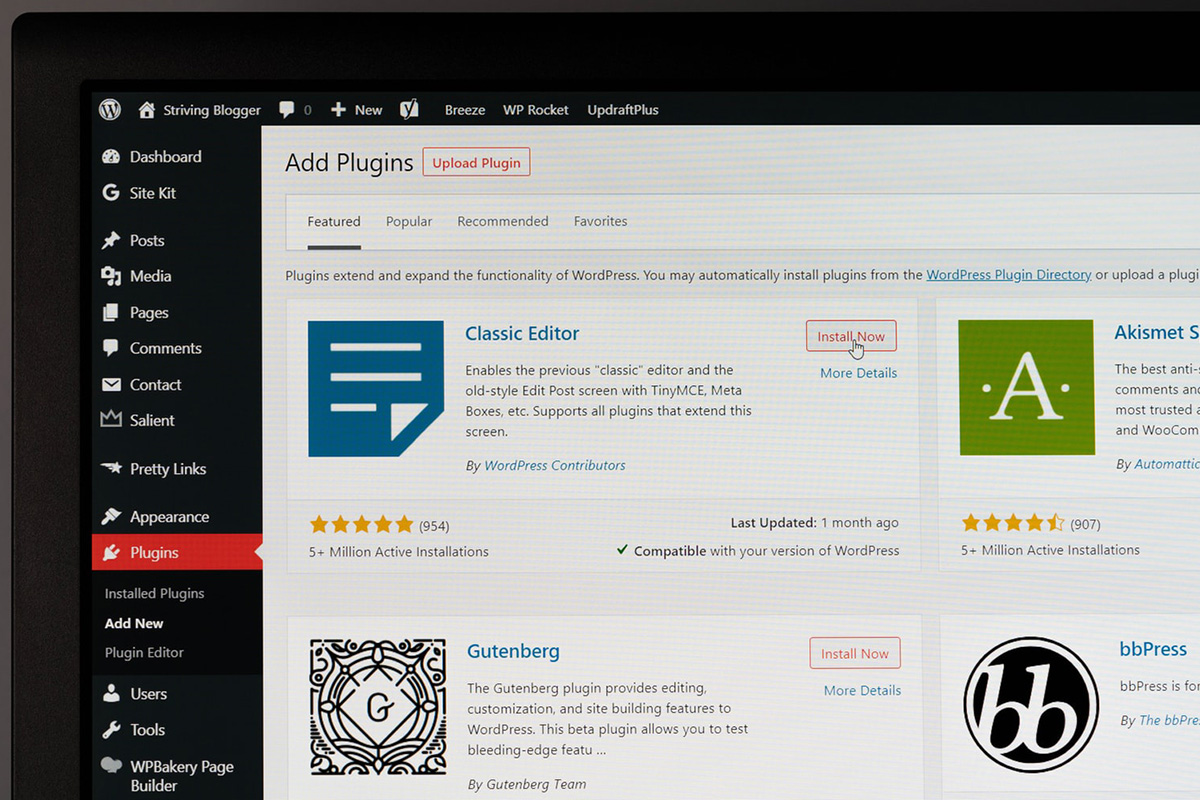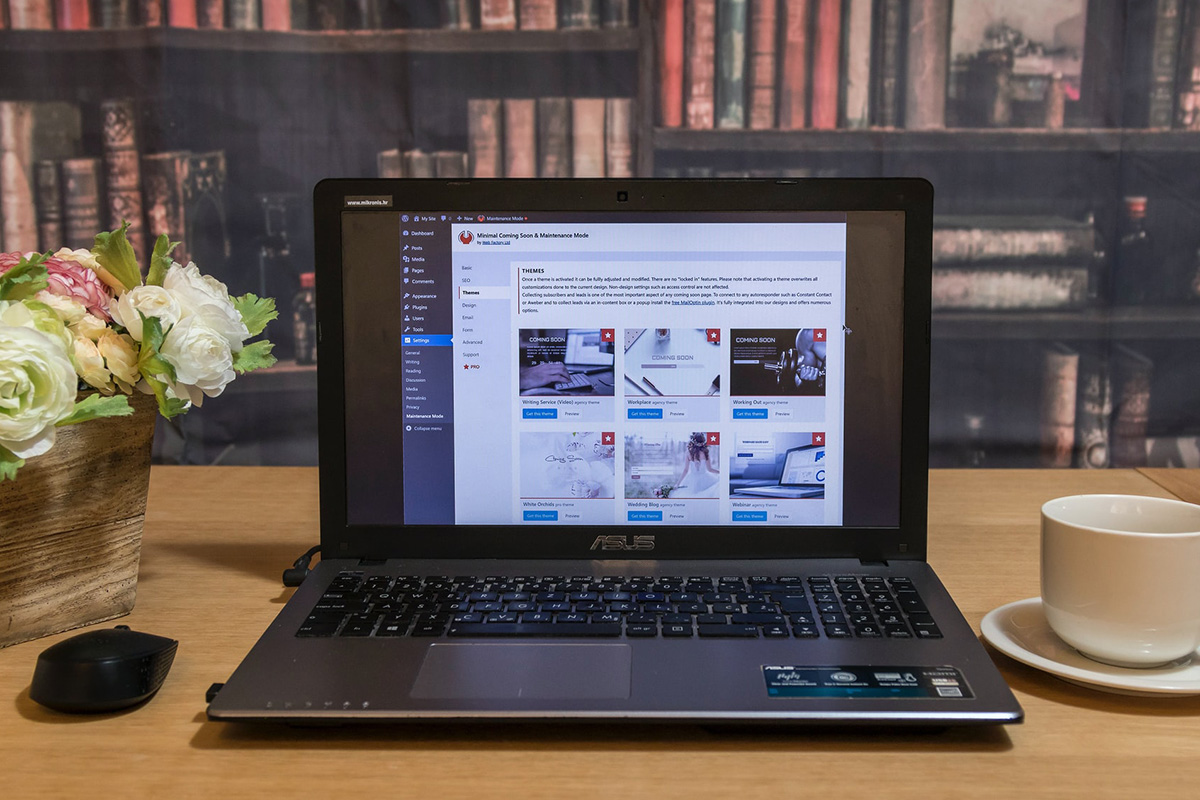WordPress is considered the most popular content management system (CMS) across the globe, contributing power to more than 39% of websites within 2021.

While WordPress is constantly increasing in popularity, this doesn’t ensure the safety of even long-time users who are generally unaware of some security issues that they may be at risk of receiving.
Luckily for you, we have created a complete guide to help you protect yourself from WordPress plugin vulnerabilities and how to avoid them.
The Three Common Vulnerabilities Found On WordPress Sites
Essentially, a WordPress ‘vulnerability’ is described as a flaw found in the software (such as themes, WordPress itself, or plugins) that makes you more impressionable to attacks on your site.
Below, you will find the most common vulnerabilities:
- Outdated WordPress core
- Outdated plugins and themes
- Abandoned plugins
Attackers can exploit WordPress vulnerabilities through a range of different techniques, including cross-site scripting (this is where hackers encrypt malicious Javascript code onto a site, which tricks users into sharing sensitive information or data) and SQL injection (where hackers inject malicious queries through the SQL database to gain access to a WordPress dashboard).
1. Outdated WordPress Core
If you have ever had a WordPress site, you’ll know that it gets updated all the time. Major updates can happen a few times a year, whole minor updates are much more frequent.
You’ll be glad to know that WordPress core is much safer than third-party-created plugins, where any attacks are now patched over relatively quickly. This is one of the reasons contributing to the frequent updates.
Therefore, it’s important to always update the latest version of WordPress to have access to the latest security features and updates.
What To Do About Outdated WordPress Core Files
The solution to this is easy: make sure to make it a habit of visiting your WordPress dashboard regularly and looking for updates. Although, before updating, make sure your site is freshly backed-up.
In regards to major updates (such as 5.4, 5.5, and 5.8) you may want to wait a week before updating. This will ensure that any hidden bugs will be resolved before you update.
If you haven’t updated in a while, ensure that you have a fresh backup in place; then, once updated; double-check your site for any problems.
2. Outdated Plugins And Themes
Outdated plugins may be one of the main reasons your WordPress site is getting hacked. Research shows that over 50% of hackers have used plugins as an entry point for attacks.
The problem is that you can’t avoid plugins either; they are the main selling point for WordPress. The ability to add features and customize your site is what makes WordPress so great.
Although, some people don’t realize that plugins and themes are essentially software; and like most software, need to be updated from time to time.
The longer you wait to update a particular plugin or theme, the more susceptible your site becomes to problems and issues, either with not being able to handle a newer version of WordPress on your site or security vulnerabilities.
The general rule of thumb is the longer you ignore it, the worse it will get.
What To Do About Outdated Plugins And Themes
Much like an outdated WordPress core, it’s important to constantly check your WordPress dashboards for any required updates to themes and plugins. Simply run all the available updates; it’s that easy!
But make sure you backup your site before doing anything, especially with complex plugs such as WooCommerce.
Not only is this one of the most effective ways to ensure the safety of your site, but it is also extremely easy to do and rarely results in any problems.
You just need to remember to always check for updates and backup your site.
If you have any commercial themes or plugins, make sure to check for license updates; otherwise, you may lose the ability to use a particular theme/ plugin while missing out on bug fixes and functionality.
To be extra protective, make sure your site has a security plugin that scans for any malware.
These come in both manual and automated functions. If you struggle with remembering to update your site, then an automated plugin may be best for you.
If you happen to no longer require a particular plugin, make sure to deactivate it and then remove it. Malware could still potentially enter through any unused plugins.

3. Abandoned Plugins
An abandoned plugin comes about when developers no longer actively maintain or change a particular plugin over a couple of years.
As a result, these plugins won’t be tested against newer versions of WordPress for compatibility issues and bugs. Essentially, if a problem were found, they haven’t been fixed; or is going to.
The longer the abandoned plugin has been around, the more likely it is to have issues or problems, whether this is with security or performance issues. These are generally unnecessary risks that can put your whole site at risk!
Some popular abandoned plugins that still remain on thousands of sites include a WordPress plugin called Limit Login Attempts.
In its prime, this would prevent Brute Force attacks, where hackers would use random usernames/ passwords to break into an account.
Although, this plugin hasn’t been updated in over 9 years, while still being installed on over 800,000 WordPress sites! Before going forward, you may want to check your plugins.
What To Do About Abandoned Plugins
Any plugin which you have noticed hasn’t been updated in a while, check the Plugins page located on your site.
For each plugin, you should be able to see ‘View Details’ under the Description section. If you click on this you will be able to see when the plugin was last updated and its compatibility with the latest WordPress version.
Plugins that haven’t been updated in over 2 years are not worth keeping, and you should start looking for replacements. Although, if you no longer require it, you can just delete it.
Luckily for you, it’s generally easy to come across a replacement plugin that essentially did the same thing your old plugin did.
However, just remember to check your site to make sure the plugin is working properly. This is the same for removal as well, once removed check your site.
Final Thoughts
In this article, we have outlined the three most common WordPress vulnerabilities and what to do if you were to come across any to protect your site and customers.
If you’re using your WordPress as a website, then it’s extremely important to ensure that it is secure and protected from any threats.
Likewise, it’s just as important to make sure that you regularly back up your site and store it safely away from your primary account. Backing up your site can mean the difference between a catastrophe and a miracle!
Hopefully, this guide has provided you with everything you need and the knowledge to keep your WordPress site safe and how to avoid any vulnerabilities.
- The 20 Best Blogging Courses That Are For Beginners - December 7, 2022
- 20 Best WordPress Plugins For Blogs For Effective Blogging! - December 7, 2022
- 5 Excellent Affiliate Marketing Courses To Learn - December 6, 2022








